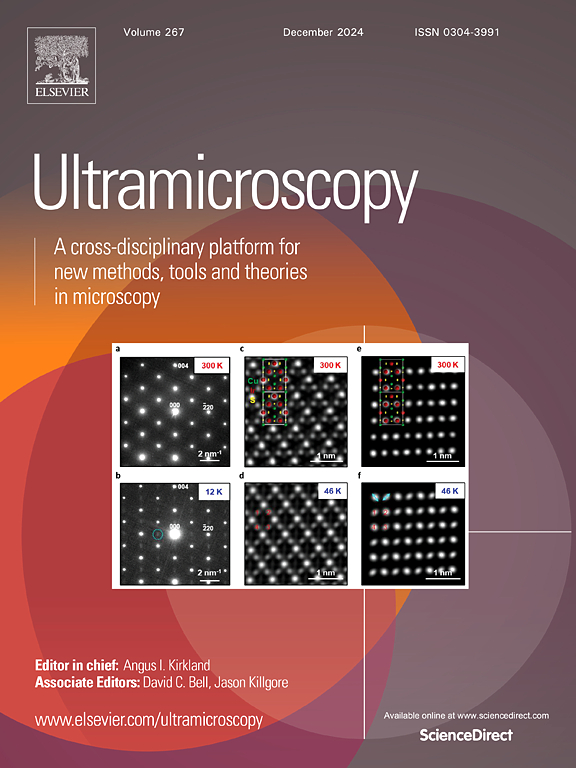探索用于 4D-STEM-DPC 数据处理的深度学习模型。
IF 2.1
3区 工程技术
Q2 MICROSCOPY
引用次数: 0
摘要
在纳米尺度的磁性材料研究中,差分相衬(DPC)成像是一种有效的工具。随着直接探测器技术的进步和四维扫描透射电子显微镜(4D-STEM)的普及,STEM-DPC 大数据处理的新方法和增强方法也在不断发展。传统算法都是根据实验量身定制的,因此在本文中,我们将探讨如何利用卷积神经网络(CNN)进行监督学习,以实现 STEM-DPC 数据的自动化和一致性处理。我们研究了两种不同的方法,一种是通过回归分析直接跟踪光束,另一种是在预处理步骤中使用改进的 U 网直接分割光束。CNN 在实验获得的 4D-STEM 数据上进行了训练,使其能够有效处理在类似仪器采集参数下收集的数据。模型输出结果与传统算法进行了比较,特别是在出现强烈衍射对比的情况下如何处理数据,以及如何影响畴壁轮廓和宽度测量。本文章由计算机程序翻译,如有差异,请以英文原文为准。
Exploring deep learning models for 4D-STEM-DPC data processing
For the study of magnetic materials at the nanoscale, differential phase contrast (DPC) imaging is a potent tool. With the advancements in direct detector technology, and consequent popularity gain for four-dimensional scanning transmission electron microscopy (4D-STEM), there has been an ongoing development of new and enhanced ways for STEM-DPC big data processing. Conventional algorithms are experimentally tailored, and so in this article we explore how supervised learning with convolutional neural networks (CNN) can be utilized for automated and consistent processing of STEM-DPC data. Two different approaches are investigated, one with direct tracking of the beam with regression analysis, and one where a modified U-net is used for direct beam segmentation as a pre-processing step. The CNNs are trained on experimentally obtained 4D-STEM data, enabling them to effectively handle data collected under similar instrument acquisition parameters. The model outputs are compared to conventional algorithms, particularly in how they process data in the presence of strong diffraction contrast, and how they affect domain wall profiles and width measurement.
求助全文
通过发布文献求助,成功后即可免费获取论文全文。
去求助
来源期刊

Ultramicroscopy
工程技术-显微镜技术
CiteScore
4.60
自引率
13.60%
发文量
117
审稿时长
5.3 months
期刊介绍:
Ultramicroscopy is an established journal that provides a forum for the publication of original research papers, invited reviews and rapid communications. The scope of Ultramicroscopy is to describe advances in instrumentation, methods and theory related to all modes of microscopical imaging, diffraction and spectroscopy in the life and physical sciences.
 求助内容:
求助内容: 应助结果提醒方式:
应助结果提醒方式:


